
Deutsch-Chinesische Enzyklopädie, 德汉百科
 Malaysia
Malaysia
 Argentina
Argentina
 Australia
Australia
 Belgium
Belgium
 Brazil
Brazil
 China
China
 Denmark
Denmark
 Germany
Germany

 Financial
Financial
 International Bank for Cooperation
International Bank for Cooperation
 France
France
 India
India
 Indonesia
Indonesia
 Internationaler Währungsfonds
Internationaler Währungsfonds
 Camille Gutt
Camille Gutt
 Internationaler Währungsfonds
Internationaler Währungsfonds
 Christine Lagarde
Christine Lagarde
 Internationaler Währungsfonds
Internationaler Währungsfonds
 Dominique Strauss-Kahn
Dominique Strauss-Kahn
 Internationaler Währungsfonds
Internationaler Währungsfonds
 Horst Köhler
Horst Köhler
 Internationaler Währungsfonds
Internationaler Währungsfonds
 Ivar Rooth
Ivar Rooth
 Internationaler Währungsfonds
Internationaler Währungsfonds
 Jacques de Larosière
Jacques de Larosière
 Internationaler Währungsfonds
Internationaler Währungsfonds
 Johan Witteveen
Johan Witteveen
 Internationaler Währungsfonds
Internationaler Währungsfonds
 Michel Camdessus
Michel Camdessus
 Internationaler Währungsfonds
Internationaler Währungsfonds
 Per Jacobsson
Per Jacobsson
 Internationaler Währungsfonds
Internationaler Währungsfonds
 Pierre-Paul Schweitzer
Pierre-Paul Schweitzer
 Internationaler Währungsfonds
Internationaler Währungsfonds
 Rodrigo Rato
Rodrigo Rato
 Internationaler Währungsfonds
Internationaler Währungsfonds
 Kristalina Georgiewa
Kristalina Georgiewa
 Italy
Italy
 Japan
Japan
 Canada
Canada
 Malaysia
Malaysia
 Mexico
Mexico
 Netherlands
Netherlands
 Nigeria
Nigeria
 Norwegen
Norwegen
 Austria
Austria
 Poland
Poland
 Republic of Korea
Republic of Korea
 Russia
Russia
 Saudi Arabia
Saudi Arabia
 Sweden
Sweden
 Switzerland
Switzerland
 Spain
Spain
 South Africa
South Africa
 Venezuela
Venezuela
 United States
United States
 United Kingdom
United Kingdom

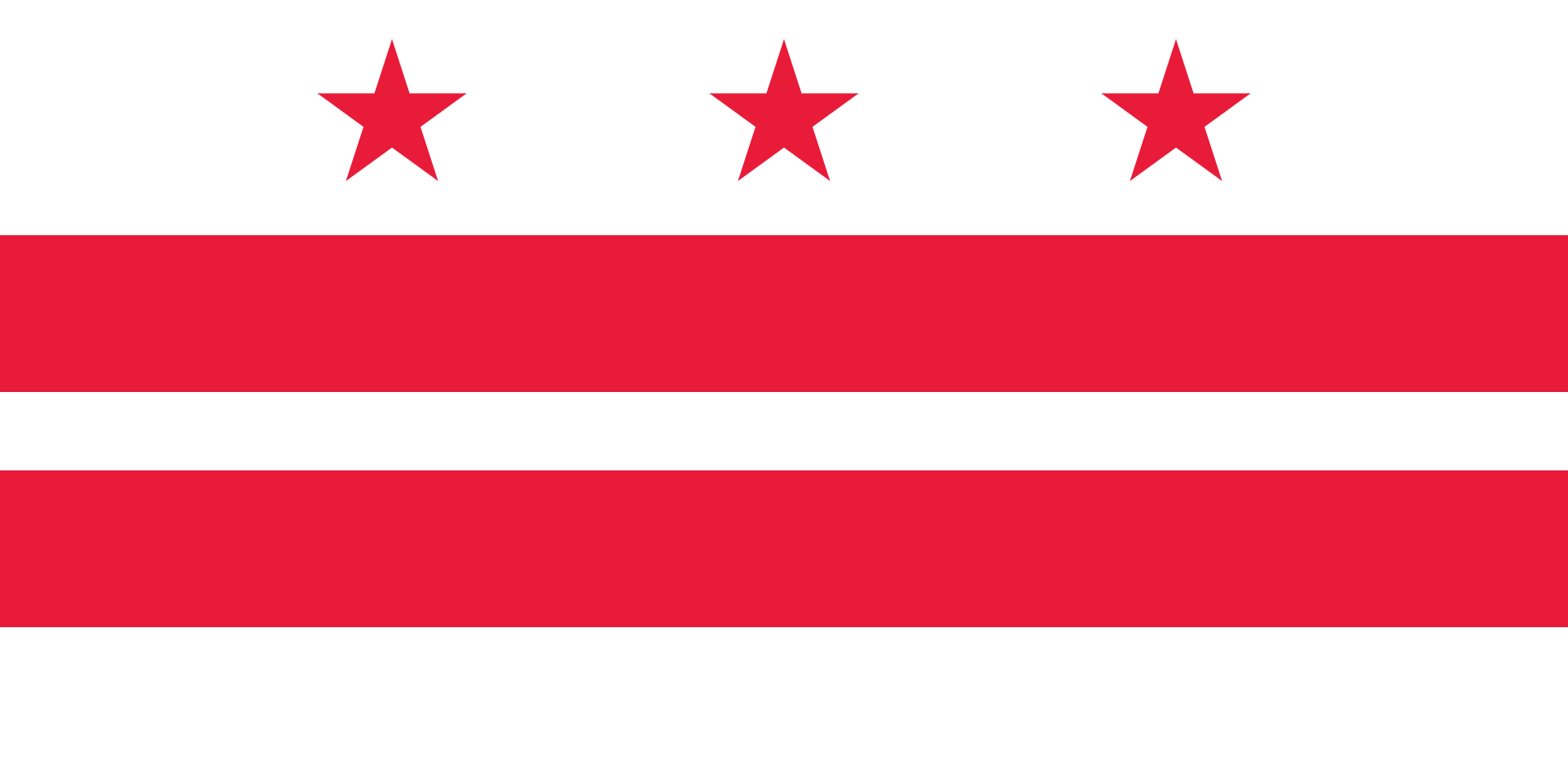 Washington, D.C.
Washington, D.C.

 Important International Organizations
Important International Organizations

 Economy and trade
Economy and trade
 Economic and political research
Economic and political research

国际货币基金组织(法语:Fonds Monétaire International,缩写:FMI;英语:International Monetary Fund,缩写:IMF)于1945年12月27日成立,与世界银行同为世界两大金融机构,由189个国家组成,致力于促进全球货币合作,确保金融稳定,促进国际贸易。职责是监察货币汇率和各国贸易情况、提供技术和资金协助[3][4][5],确保全球金融制度运作正常;其总部设置于美国华盛顿特区。
Der Internationale Währungsfonds (IWF; englisch International Monetary Fund, IMF; auch bekannt als Weltwährungsfonds) ist eine rechtlich, organisatorisch und finanziell selbständige Sonderorganisation der Vereinten Nationen mit Sitz in Washington, D.C., USA.
Hauptaufgabe des IWF ist die Vergabe von Krediten an Länder ohne ausreichende Währungsreserven, die in Zahlungsbilanzschwierigkeiten geraten sind. Weitere Tätigkeitsfelder sind die Förderung der internationalen Zusammenarbeit in der Währungspolitik, Ausweitung des Welthandels, Stabilisierung von Wechselkursen, Überwachung der Geldpolitik und technische Hilfe.
Der IWF und seine Schwesterorganisation Weltbank haben ihren Ursprung im 1944 geschaffenen Bretton-Woods-System fester Wechselkurse, das auf der damals mit Gold gedeckten Leitwährung US-Dollar beruhte. Sie waren als internationale Steuerungsinstrumente geplant, mit denen eine Wiederholung der Währungsturbulenzen der Zwischenkriegszeit und der Fehler des Goldstandards aus den 1920er Jahren verhindert werden sollte. Beide Organisationen werden daher als Bretton-Woods-Institution bezeichnet. Die Kreditvergabe des IWF ist an wirtschaftspolitische Auflagen geknüpft, die die Rückzahlung der Kredite sichern sollen. Anders als der IWF vergibt die Weltbank auch Kredite für spezielle Projekte.
Der IWF hat zurzeit (Stand April 2020) 189 Mitgliedstaaten, deren Stimmrecht sich an ihrem Kapitalanteil orientiert. Die Mitgliedstaaten mit den größten Stimmanteilen sind: USA 16,51 %, Japan 6,15 %, China 6,08 %, Deutschland 5,32 %, Frankreich 4,03 %, Vereinigtes Königreich 4,03 % und Italien 3,02 %. Von den deutschsprachigen Ländern haben außerdem Luxemburg 0,29 %, Österreich 0,81 % und die Schweiz 1,18 % Stimmenanteile.[4]
Beschlüsse müssen im IWF mit einer Mehrheit von 85 % getroffen werden. Dadurch verfügen jeweils die USA allein und die EU-Staaten gemeinsam de facto über eine Sperrminorität.[5]
国際通貨基金(こくさいつうかききん、英語: International Monetary Fund, IMF)は、国際金融、並びに、為替相場の安定化を目的として設立された国際連合(国連)の専門機関である。本部は、アメリカ合衆国の首都ワシントンD.C.にある。2018年現在、加盟国は189か国である[2]。
加盟国の経常収支が著しく悪化した場合などに融資などを実施することで、国際貿易の促進、加盟国の高水準の雇用と国民所得の増大、為替の安定、などに寄与する事を目的としている。 また、為替相場の安定のために、経常収支が悪化した国への融資や、為替相場と各国の為替政策の監視などを行っている。各国の中央銀行の取りまとめ役のような役割を負う。世界銀行と共に、国際金融秩序の根幹を成す。
The International Monetary Fund (IMF) is an international organization headquartered in Washington, D.C., consisting of 189 countries working to foster global monetary cooperation, secure financial stability, facilitate international trade, promote high employment and sustainable economic growth, and reduce poverty around the world while periodically depending on the World Bank for its resources.[1] Formed in 1944 at the Bretton Woods Conference primarily by the ideas of Harry Dexter White and John Maynard Keynes,[6] it came into formal existence in 1945 with 29 member countries and the goal of reconstructing the international payment system. It now plays a central role in the management of balance of payments difficulties and international financial crises.[7] Countries contribute funds to a pool through a quota system from which countries experiencing balance of payments problems can borrow money. As of 2016, the fund had XDR 477 billion (about US$ 667 billion).[8]
Through the fund and other activities such as the gathering of statistics and analysis, surveillance of its members' economies, and the demand for particular policies,[9] the IMF works to improve the economies of its member countries.[10] The organization's objectives stated in the Articles of Agreement are:[11] to promote international monetary co-operation, international trade, high employment, exchange-rate stability, sustainable economic growth, and making resources available to member countries in financial difficulty.[12] IMF funds come from two major sources: quotas and loans. Quotas, which are pooled funds of member nations, generate most IMF funds. The size of a member's quota depends on its economic and financial importance in the world. Nations with larger economic importance have larger quotas. The quotas are increased periodically as a means of boosting the IMF's resources in the form of special drawing rights.[13]
The current Managing Director (MD) and Chairwoman of the IMF is Bulgarian Economist Kristalina Georgieva, who has held the post since October 1, 2019.[14]
Gita Gopinath was appointed as Chief Economist of IMF from 1 October 2018. She received her PhD in economics from Princeton University. Prior to her IMF appointment she was economic adviser to the Chief Minister of Kerala, India.[15]
Le Fonds monétaire international (FMI) est une institution internationale regroupant 189 pays, dont le but est de promouvoir la coopération monétaire internationale, garantir la stabilité financière, faciliter les échanges internationaux, contribuer à un niveau élevé d’emploi, à la stabilité économique et faire reculer la pauvreté2.
Le FMI a ainsi pour fonction d'assurer la stabilité du système monétaire international (SMI) et la gestion des crises monétaires et financières. Pour cela, il fournit des crédits aux pays qui connaissent des difficultés financières mettant en péril l'organisation gouvernementale du pays, la stabilité de son système financier (banques, marchés financiers) ou les flux d'échanges de commerce international avec les autres pays.
Lors d'une crise financière, pour éviter qu’un pays ne fasse « défaut » (c’est-à-dire que ce pays ne puisse plus rembourser ses créanciers, voire ne plus payer ses dépenses courantes), le FMI lui prête de l’argent le temps que la confiance des agents économiques revienne. Le FMI conditionne l’obtention de prêts à la mise en place de certaines réformes économiques visant en principe à réguler la gestion des finances publiques (ingérence financière) et à établir une croissance économique équilibrée à long terme.
L'institution a été créée le 27 décembre 1945 et devait à l'origine garantir la stabilité du système monétaire international, dont l'écroulement après le krach de 1929 avait eu des effets catastrophiques sur l'économie mondiale. Après 1976 et la disparition d’un système de change fixe, le FMI perd l'essentiel de sa raison d'être et hérite d'un nouveau rôle face aux problèmes d'endettement des pays en développement et à certaines crises financières.
Il Fondo Monetario Internazionale (in sigla FMI; in inglese International Monetary Fund, IMF) è un'organizzazione internazionale pubblica[1] a carattere universale composta dai governi nazionali di 189 Paesi e insieme al gruppo della Banca Mondiale fa parte delle organizzazioni internazionali dette di Bretton Woods, dal nome della località in cui si tenne la famosa conferenza che ne sancì la creazione. L'FMI è stato formalmente istituito il 27 dicembre 1945, quando i primi 44 stati firmarono l'accordo istitutivo e l'organizzazione nacque nel maggio del 1946. Attualmente gli Stati membri sono 189.
El Fondo Monetario Internacional o FMI (en inglés: International Monetary Fund, IMF) es una organización financiera internacional con sede en Washington D. C., Estados Unidos. Nace como idea el 22 de julio de 1944 en los acuerdos de Bretton Woods, una reunión de 730 delegados de 44 países aliados de la Segunda Guerra Mundial, entrando en vigor oficialmente el 27 de diciembre de 1945. Después de 1976 y de la desaparición del sistema de cambio fijo, el FMI toma un papel preponderante ante países en desarrollo y crisis financieras internacionales. En 2010, durante la 14ª revisión general de cuotas los fondos financieros disponibles del FMI se situaban en 755 700 millones de U.S.dólares.1
A través del fondo y otras actividades como la recolección de estadísticas y datos, monitoreo de las actividades económicas de los países miembros, y la demanda de políticas concretas,2 el FMI trabaja para mejorar la economía de sus países miembros.3 Los objetivos proclamados por la organización son:4 promover la cooperación monetaria internacional, comercio internacional, reducir la desocupación, conseguir tasas de cambio sustentables, lograr crecimiento económico, y otorgar razonablemente recursos a países miembros en dificultades económicas.5 El FMI se financia con dos grandes herramientas: cuotas y préstamo. Las cuotas son aportes realizados por los países miembros al fondo común de la organización. Las mayores economías hacen aportes proporcionales mayores que las economías más pequeñas. Además, las obligaciones de cuotas aumentan periódicamente como forma de aumentar los recursos de los que puede disponer el FMI en forma de derechos especiales de giro.6
Esta organización ha sido fuertemente criticada en las últimas décadas. Las principales críticas se centran en el papel dominante que tienen los países desarrollados dentro del organismo, lo que causa que el FMI oriente sus políticas globales al fomento de un capitalismo que suele denominarse neoliberal,7 a causa de haber impuesto a los países en vías de desarrollo —y más recientemente a algunos países europeos— sus programas económicos basados en el Consenso de Washington que consisten en la reducción del déficit y del gasto público y consecuentemente de servicios y prestaciones sociales, con fundamento en las políticas y teorías monetaristas y en el principio de libre mercado,8 que deben llevarse a cabo como condiciones de los préstamos realizados y que según sus críticos ha provocado un aumento de la brecha entre ricos y pobres y un empeoramiento de los servicios públicos, como la sanidad.9 También está acusada por haber apoyado y financiado a las dictaduras militares en Latinoamérica y Africa,10 y se le han criticado puntualmente sus políticas sobre medio ambiente11 y alimentación.12
Международный валютный фонд, (МВФ) (англ. International Monetary Fund, IMF) — специализированное учреждение (валютный фонд) Организации объединённых наций (ООН) с главным офисом в городе Вашингтон, США.
189 стран являются членами МВФ, в его структурах работают 2500 человек из 133 государств мира. МВФ предоставляет кратко- и среднесрочные кредиты при дефиците платёжного баланса государства. Предоставление кредитов обычно сопровождается набором определённых условий и рекомендаций. Политика и рекомендации МВФ в отношении развивающихся стран неоднократно подвергались критике, суть которой состоит в том, что выполнение рекомендаций и условий, в итоге, направлено не на повышение самостоятельности, стабильности и развитие национальной экономики государства, а лишь на привязывание её к международным финансовым потокам.
В отличие от Всемирного банка, деятельность МВФ сосредоточена на относительно кратковременных макроэкономических кризисах. Всемирный банк предоставляет кредиты только бедным странам, МВФ может давать кредиты любой из своих стран-членов, которая испытывает нехватку иностранной валюты для покрытия краткосрочных финансовых обязательств.



吉隆坡(英语和马来语:Kuala Lumpur,简称“KL”,全称“吉隆坡联邦直辖区”)是马来西亚的首都[注 1]兼最大城市[6],一座对东南亚的文化、教育、体育、财政、经济、商业、金融都具有极大影响力的国际大都会。因许多在东南亚召开的国际级外交会议都会在吉隆坡和新加坡举行,因此吉隆坡也被视为是东南亚外交的两大中心之一。依照GaWC所公布之世界级城市名单中,吉隆坡被列为与芝加哥、洛杉矶、莫斯科、多伦多、首尔等同属于ALPHA级(Grade A)的国际都市,《外交政策》公布的2014年全球城市指数中吉隆坡位居第53名[7],经济与社会改革相关的2016年2thinknow改革城市指数则位居第92名。 [8]吉隆坡也被联合国教育、科学及文化组织选定为2020年度的“世界图书之都”(World Book Capital)[9]。
吉隆坡是全马来西亚人口最多以及最密集的城市,据2012年统计吉隆坡总面积达243平方千米(94平方英里),[6]广义的大吉隆坡都会区则包括了巴生谷,是一个有725万人的大都会区,[10]。吉隆坡是马来西亚语言和人口族群最为多元化的城市,也是全马来西亚人口和经济成长最快速的都会区。
吉隆坡地处马来半岛西岸,为雪兰莪州所环绕。 [11]吉隆坡被规划作“吉隆坡联邦直辖区”,为大马三个联邦直辖区之一,由联邦政府直接管理。 [12]吉隆坡曾经是联邦中央政府行政中心和马来西亚联邦法院所在地,但已于1999年迁往吉隆坡以南20公里的布城(行政首都)。 [13]目前马来西亚36个联邦政府部门总部仅剩4个仍然常驻在吉隆坡,但即便如此吉隆坡仍然是马来西亚国会所在地,马来西亚国家元首的官邸-国家皇宫也位在于此。此外,吉隆坡也是马来西亚最大的股票交易所-吉隆坡证券交易所的所在地。
据Euromonitor于2017年的统计指出,吉隆坡每年拥有高达1230万名外国游客到访,更是超越了北京、罗马、台北、上海等,并在最吸引外国游客的城市排名中位居全球第十名[14]。此外,大吉隆坡同时也是许多本国与国外高等学府的所在地。在2018年泰晤士世界大学排行榜中,排名全国前两位的本地大学马来亚大学(UM)和拉赫曼大学(UTAR)都在大吉隆坡里。
1980年代起,在时任总理马哈蒂尔的执政下,吉隆坡周围陆续举办多场国际体育赛事、政治与文化活动,如1998年的英联邦运动会与一级方程式赛车巡回赛。高耸而壮观的国油双峰塔是吉隆坡的著名地标,与其周围环绕的高楼大厦共同象征马来西亚未来的发展繁荣。亚洲金融风暴前吉隆坡已发展成一座对全东南亚极具影响力的国际大都会。
Kuala Lumpur (Jawi كوالا لومڤور, Aussprache: [ˈkwaːla ˈlumpʊr], übersetzt schlammige Flussmündung) ist die Hauptstadt Malaysias.
Die als Bundesterritorium verwaltete Stadt ist Malaysias administratives, kulturelles und ökonomisches Zentrum und Mittelpunkt der größten Metropolregion des Landes. Von den meisten Bewohnern wird sie einfach „KL“ genannt. In der pulsierenden Millionenmetropole sind vielerlei Kulturen und Religionen vertreten, man sieht Minarette der Moscheen, christliche Kirchtürme, chinesische Pagoden und indische Tempel in der gesamten Stadt. Jährlich besuchen bis zu elf Millionen Touristen Kuala Lumpur.[3]
Neben den Bauten aus der architektonischen Vergangenheit der Stadt prägen Hochhäuser (vor allem im Bankenviertel) als Zeichen des Fortschritts Kuala Lumpurs das Stadtbild. Die Stadt bedeckt eine Fläche von 243,65 km² und hat 1.588.750 Einwohner (Stand 2010), womit sie vor dem zur Metropolregion Kuala Lumpur gehörenden Subang Jaya größte Stadt Malaysias ist.
クアラルンプール連邦直轄領、(クアラルンプール連邦直轄領れんぽうちょっかつりょう、マレー語: Wilayah Persekutuan Kuala Lumpur)通称 クアラルンプールは、マレーシアの首都。同国の連邦直轄領のひとつ。マレー半島南部の丘陵地帯にある。東南アジア有数の世界都市に数えられる。一般的にKLと略して称される。
クアラルンプールはマレーシア語で「泥が合流する場所」という意味があり、市中心部にある代表的なモスク「ジャメ・モスク」の付近で、ゴンバック川とクラン川が合流していることが基になっている。正式には連邦領クアラルンプール(Wilayah Persekutuan Kuala Lumpur)と称し、中国語では吉隆坡(北京語読みは「ジーロンポー、拼音: 」、広東語読みは「ガッロンポ―、Gat1lung4po1」)と記される。
多民族が平和的に共存するマレーシアの首都らしく、多彩な文化が混ざり合ったことがかもし出す賑やかな雰囲気が特徴である。近年は高速道路や市内鉄道、モノレールなどのインフラ開発が進み、豊かな緑の中に高層ビルが立ち並ぶ東南アジア有数の近代都市となった。また、東南アジアの大都市には珍しく、市街地が清潔で治安がいいことも特徴である。
アメリカのシンクタンクが2017年に発表した総合的な世界都市ランキングにおいて、世界49位の都市と評価された[1]。東南アジアではシンガポール、バンコクに次ぐ3位である。また、日本の民間研究所が2016年に発表した「世界の都市総合力ランキング」では、世界32位と評価されており、東南アジアではシンガポールに次ぐ2位である[2]。
連邦政府機能を市東南郊外の新行政都市プトラジャヤ(Putrajaya)へ移す計画が進行中。
Kuala Lumpur (Malaysian pronunciation: [ˈkualə, -a ˈlumpo(r), -ʊ(r)]), officially the Federal Territory of Kuala Lumpur (Malay: Wilayah Persekutuan Kuala Lumpur), (Jawi: ولايه ڤرسكوتوان کوالا لومڤور) (Chinese: 吉隆坡聯邦直轄區)) and commonly known as KL, is the national capital and largest city in Malaysia. As the global city of Malaysia, it covers an area of 243 km2 (94 sq mi) and has an estimated population of 1.73 million as of 2016.[6] Greater Kuala Lumpur, also known as the Klang Valley, is an urban agglomeration of 7.25 million people as of 2017.[7] It is among the fastest growing metropolitan regions in Southeast Asia, in both population and economic development.
Kuala Lumpur is the cultural, financial and economic centre of Malaysia. It is also home to the Parliament of Malaysia and the official residence of the Malaysian King (Yang di-Pertuan Agong), the Istana Negara. The city once held the headquarters of the executive and judicial branches of the federal government, but these were relocated to Putrajaya in early 1999.[8] However, some sections of the political bodies still remain in Kuala Lumpur.
Kuala Lumpur is one of the three federal territories of Malaysia,[9] enclaved within the state of Selangor, on the central west coast of Peninsular Malaysia.[10] Since the 1990s, the city has played host to many international sporting, political and cultural events including the 1998 Commonwealth Games and the 2017 Southeast Asian Games. Kuala Lumpur has undergone rapid development in recent decades and is home to the tallest twin buildings in the world, the Petronas Towers, which have since become an iconic symbol of Malaysian development.
Kuala Lumpur has a comprehensive road system supported by an extensive range of public transport networks, such as Mass Rapid Transit (MRT), Light Metro (LRT), monorail, commuter rail (KTM), public buses, hop on & hop off buses (free of charge) and an airport rail link (ERL). Kuala Lumpur is one of the leading cities in the world for tourism and shopping, being the 10th most-visited city in the world in 2017.[11] The city houses three of the world's 10 largest shopping malls.[12]
Kuala Lumpur has been ranked by the Economist Intelligence Unit's Global Liveability Ranking at No. 70 in the world, and No. 2 in Southeast Asia after Singapore.[13] Kuala Lumpur was named as one of the New7Wonders Cities,[14] and has been named as World Book Capital 2020 by UNESCO.[15][16]
Kuala Lumpur (/ˈkualə ˈlumpo(r)/), souvent désignée par ses initiales KL, est l'une des deux capitales de la Malaisie (avec Putrajaya). Cœur industriel, financier et culturel du pays, la ville a une superficie de 243 km2 et compte plus de 1 600 000 habitants. Son agglomération, nommée Grand Kuala Lumpur (en) ou Vallée du Kelang, en compte plus de 7 300 000 en 2010 : il s'agit de la ville la plus peuplée du pays et une de celles connaissant la plus forte croissance urbaine et économique d'Asie du Sud-Est. Le Territoire fédéral de Kuala Lumpur délimite l'agglomération et constitue l'un des trois territoires fédéraux de Malaisie (en) ; il est entièrement enclavé dans l’État de Selangor, au milieu de la côte ouest de la Malaisie péninsulaire.
Arrachée à la jungle dans les années 1850, la ville doit sa naissance et sa fortune aux abondants gisements d'étain découverts au XIXe siècle. Kuala Lumpur ne fut longtemps qu'un campement de huttes de bambous, infesté par la malaria et ravagé à de multiples reprises par les inondations et les incendies. Elle grandit grâce au commerce de l'étain pour devenir, en 1896, la capitale des États malais fédérés. Durant la Seconde Guerre mondiale, la ville est dévastée lors de la bataille de Kuala Lumpur (en) et est conquise par l'armée impériale japonaise en 1942. Rapidement reconstruite, elle sera le témoin de violences inter-ethniques entre les communautés malaise et chinoise lors de l'Incident du 13 mai 1969 (en). Depuis les années 1980, Kuala Lumpur a connu un développement extrêmement rapide et est devenue une métropole.
Ville mondiale, Kuala Lumpur a vu se développer de nombreux gratte-ciels dans son quartier d'affaires, dont les tours Petronas, qui furent les plus hautes du monde. Son développement industriel s'est fait notamment autour des nouvelles technologies et de la finance. Elle nourrit d'importants liens avec la Silicon Valley malaisienne, Cyberjaya, ainsi qu'avec Singapour, situé à 300 kilomètres au sud-est. Elle accueille également le siège du Parlement de Malaisie et l'Istana Negara (en) – la résidence royale –, mais le gouvernement a été transféré à Putrajaya, qui est devenue la capitale administrative du pays en 1999.
Son nom, signifiant en malais « confluent vaseux », s'explique par sa situation au confluent de deux cours d'eau : le fleuve Kelang, le plus important, et l'un de ses affluents, le Gombak. Son climat est de type équatorial, avec des températures moyennes et des précipitations très élevées toute l'année. Ville cosmopolite, Kuala Lumpur présente la particularité d'être peuplée à 43 % de Chinois, soit presque autant que de Malais (45 %) ; elle constitue ainsi une sorte d'enclave bouddhiste dans un pays majoritairement musulman. Vitrine du développement rapide de la Malaisie, la ville accueille de grands évènements tels que les Jeux du Commonwealth en 1998 ou le Grand Prix automobile de Malaisie.
Kuala Lumpur (in tamil: கோலாலம்பூர், in cinese semplificato: 吉隆坡) è la più grande città della Malaysia e la capitale della Federazione. All'interno della Malaysia il nome viene spesso abbreviato in KL. Gli uffici del Governo sono stati spostati a Putrajaya, ma la residenza del capo dello Stato (Yang di-Pertuan Agong), il Parlamento e il potere giudiziario hanno tutti sede a Kuala Lumpur.
Kuala Lumpur è uno dei tre Territori Federali della Malaysia e un'enclave nello Stato di Selangor.
L'aeroporto principale del paese è l'Aeroporto di Kuala Lumpur o (KLIA).
Kuala Lumpur (malayo latino: Kuala Lumpur, malayo jawi: كوالا لومڤور; chino: 吉隆坡, pinyin: Jílóngpō, Yale cantonesa: Gātlùngbō; tamil: கோலாலம்பூர், tr.: Kōlālampūr) es la mayor ciudad de Malasia, la capital de la federación y la capital nacional legislativa.2 Es asimismo uno de los tres territorios federales del país y se encuentra físicamente enclavada dentro del estado de Selangor. Albergaba al poder ejecutivo y judicial malayo, los cuales desde finales de los años 1990 fueron transferidos a la recién construida capital administrativa Putrajaya,3 aunque, no obstante, algunas secciones del poder judicial se han mantenido en Kuala Lumpur. En la ciudad también se encuentra la residencia oficial del rey de Malasia, el Istana Negara.
Cuenta con una población de 1 887 674 habitantes distribuidos en una superficie de 243,65 km², y un área metropolitana de 7,2 millones de habitantes,e importancia, figura junto con El Cairo, Estambul, Karachi, Bagdad, Teherán, Alejandría, La Meca, Casablanca y Yakarta como una de las urbes más importantes del mundo islámico. En general, Kuala Lumpur es abreviada como KL en Malasia, y es mundialmente conocida por ser el lugar donde se encuentran las torres Petronas, actualmente los edificios gemelos más altos del mundo y anteriormente edificios más altos del mundo de forma absoluta.
Куа́ла-Лу́мпур[2][3], также встречается вариант ударения Куа́ла-Лумпу́р[4], малайск. Wilayah Persekutuan Kuala Lumpur, джави:كوالا لومڤور) — столица Малайзии.
Население на 2009 год составляет 1 809 699 человек. Мэром (datuk bandar) Куала-Лумпура с 2015 года является Амин Нордин Абдул Азиз[en].




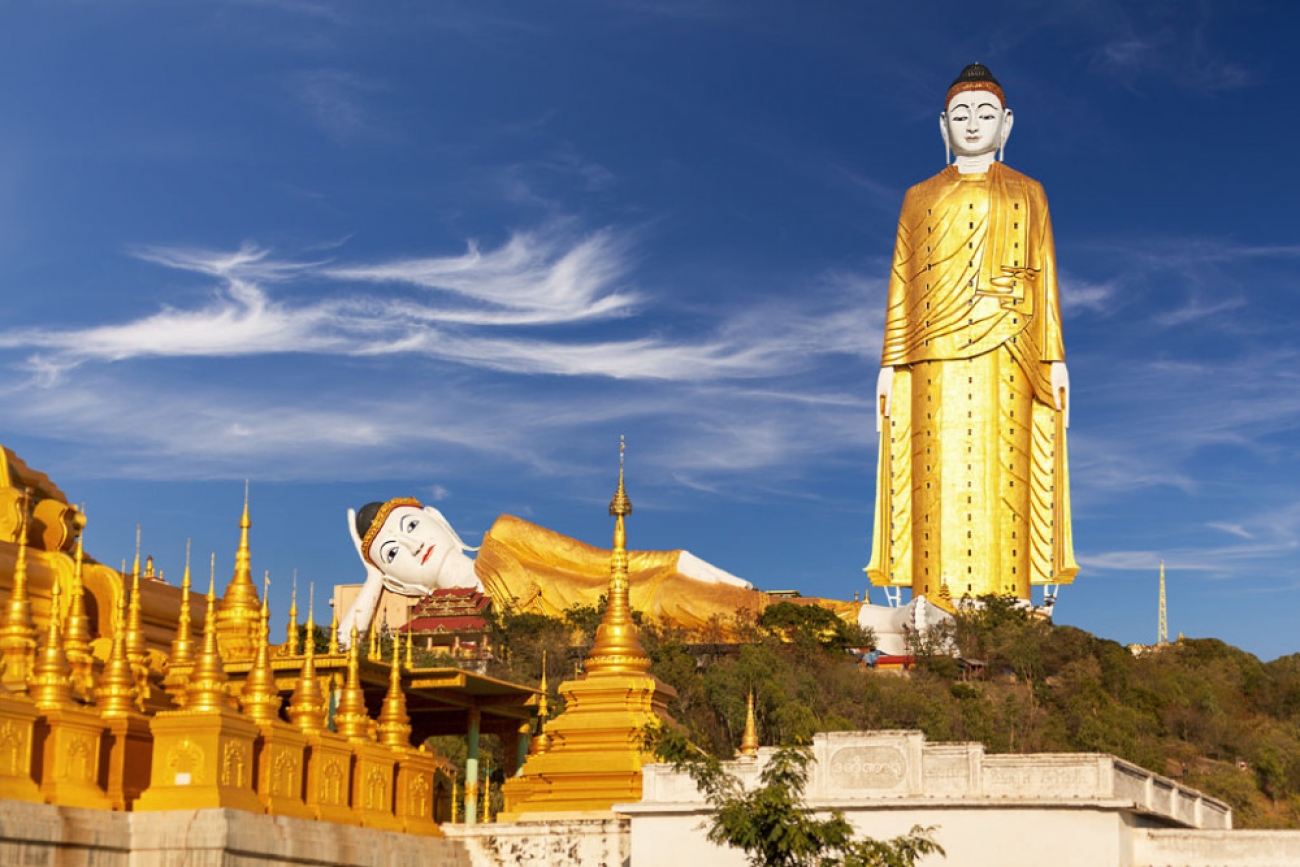

马来西亚(马来语、英语:Malaysia[注 4]; ![]() i/məˈleɪziə, -ʒə/; 马来语:[məlejsiə]),简称大马[注 5][18][19],是一个位于东南亚的多元种族国家。由前马来亚联合邦、北婆罗洲(今沙巴)、砂拉越及新加坡于1963年9月16日所组成的联邦制、议会民主制、选举君主制和君主立宪制国家,后新加坡州在1965年8月9日被联邦除名,并独立建国。
i/məˈleɪziə, -ʒə/; 马来语:[məlejsiə]),简称大马[注 5][18][19],是一个位于东南亚的多元种族国家。由前马来亚联合邦、北婆罗洲(今沙巴)、砂拉越及新加坡于1963年9月16日所组成的联邦制、议会民主制、选举君主制和君主立宪制国家,后新加坡州在1965年8月9日被联邦除名,并独立建国。
马来西亚全国总面积共330,345平方公里[20],被南海分为东西两大部分:西半部的马来半岛分为十一个州及二个联邦直辖区吉隆坡和布城,常称为“西马”,北接泰国,南部隔着柔佛海峡,以新柔长堤和第二通道与新加坡连接;而东半部位于世界第三大岛婆罗洲的北部,分属沙巴和砂拉越两个邦及纳闽联邦直辖区[17],常被称为“东马”,南邻印度尼西亚的加里曼丹,而文莱则与东马三面接壤。首都位于吉隆坡,是马来西亚人口中最密集和最繁荣的地区,联邦政府所在地则位于布城。马来西亚的地理位置接近赤道,其气候于亚洲热带型雨林气候[21],导致人口密度较低,而马来西亚半岛地区的人口密集度比婆罗洲地区高许多,也是首都和联邦政府所在地。截至2020年,全国人口总计3227万[11]。
马来西亚的联邦官方宗教虽然为伊斯兰教,但国民于《马来西亚联邦宪法》[注 6]下享有宗教自由的权利[22]。国内主要宗教有伊斯兰教、佛教、基督教新教、天主教、印度教、锡克教等。马来西亚民族方面十分多元,由马来人、华人(包括峇峇娘惹/土生华人)、印度人、原住民(伊班人、卡达山杜顺人、比达友人、闪迈人、其他西马半岛原住民、东马砂拉越和沙巴原住民)和少数欧亚群体(克里斯坦人)等共同组成的多元民族国家。
马来西亚最高元首为君主立宪制国家元首,由马来统治者会议选出,任期五年。政府则由获得最多国会议席的政党或联盟的领袖-总理所领导[23][24],政治体制沿袭自英国的威斯敏斯特制度[25]。在外交方面,马来西亚是联合国会员国,也是环印度洋区域合作联盟、亚洲太平洋经济合作组织、英联邦、东南亚国家联盟、不结盟运动以及伊斯兰会议组织等的成员国,同时也是东南亚国家联盟以及伊斯兰会议组织的创始国之一。马来西亚也曾担任东南亚国家联盟、伊斯兰会议组织以及不结盟运动的主席,也曾担任联合国安理会非常任理事国。
Malaysia [maˈla͜izi̯a], seltener Malaysien, ist eine konstitutionelle Wahlmonarchie mit 32 Millionen Einwohnern, bestehend aus 13 Bundesstaaten in Südostasien auf der Malaiischen Halbinsel oder Westmalaysia mit der Hauptstadt Kuala Lumpur und Ostmalaysia auf einem Teil der Insel Borneo. Zwischen den beiden ungefähr gleich großen Landesteilen liegt das Südchinesische Meer.
Die malaiische Halbinsel grenzt zu Wasser und Land an Thailand und hat Seegrenzen mit Vietnam, Singapur und Indonesien. Im Süden ist sie durch die Straße von Malakka von der indonesischen Insel Sumatra getrennt und durch einen Damm mit dem Stadtstaat Singapur auf der gleichnamigen Insel verbunden. Ostmalaysia hat eine Land- und Seegrenze mit dem Sultanat Brunei im Norden und mit Indonesien im Süden und hat Seegrenzen zu Vietnam und den Philippinen.
Malaysia entstand 1963 aus vier ehemaligen Teilen des Britischen Weltreichs: der Föderation Malaya, der Kronkolonie Nordborneo, der Kronkolonie Singapur (bis 1965) und der Kolonie Sarawak.[7] Seit der Unabhängigkeit 1957 vom Vereinigten Königreich ist Malaysia Teil des Commonwealth of Nations. Das politische System des Landes basiert auf dem britischen Westminster-System.
Staatsoberhaupt ist der König. Er trägt den Titel Yang di-Pertuan Agong und wird alle fünf Jahre aus einer Reihe von neun Adelsträgern gewählt. Das Parlament hat ein Ober- und ein Unterhaus nach englischem Vorbild. Von der Gründung bis zum Jahr 2018 führte in beiden Kammern die Mehrheitskoalition Barisan Nasional unter der Führung der Partei United Malays National Organisation. Im Jahr 2018 löste das Oppositionsbündnis Pakatan Harapan die bisherige Regierung ab und stellte damit erstmals den Premierminister.[9]
Malaysia ist Gründungsmitglied des Verbands Südostasiatischer Nationen (ASEAN) und gilt wirtschaftlich als Schwellenland.
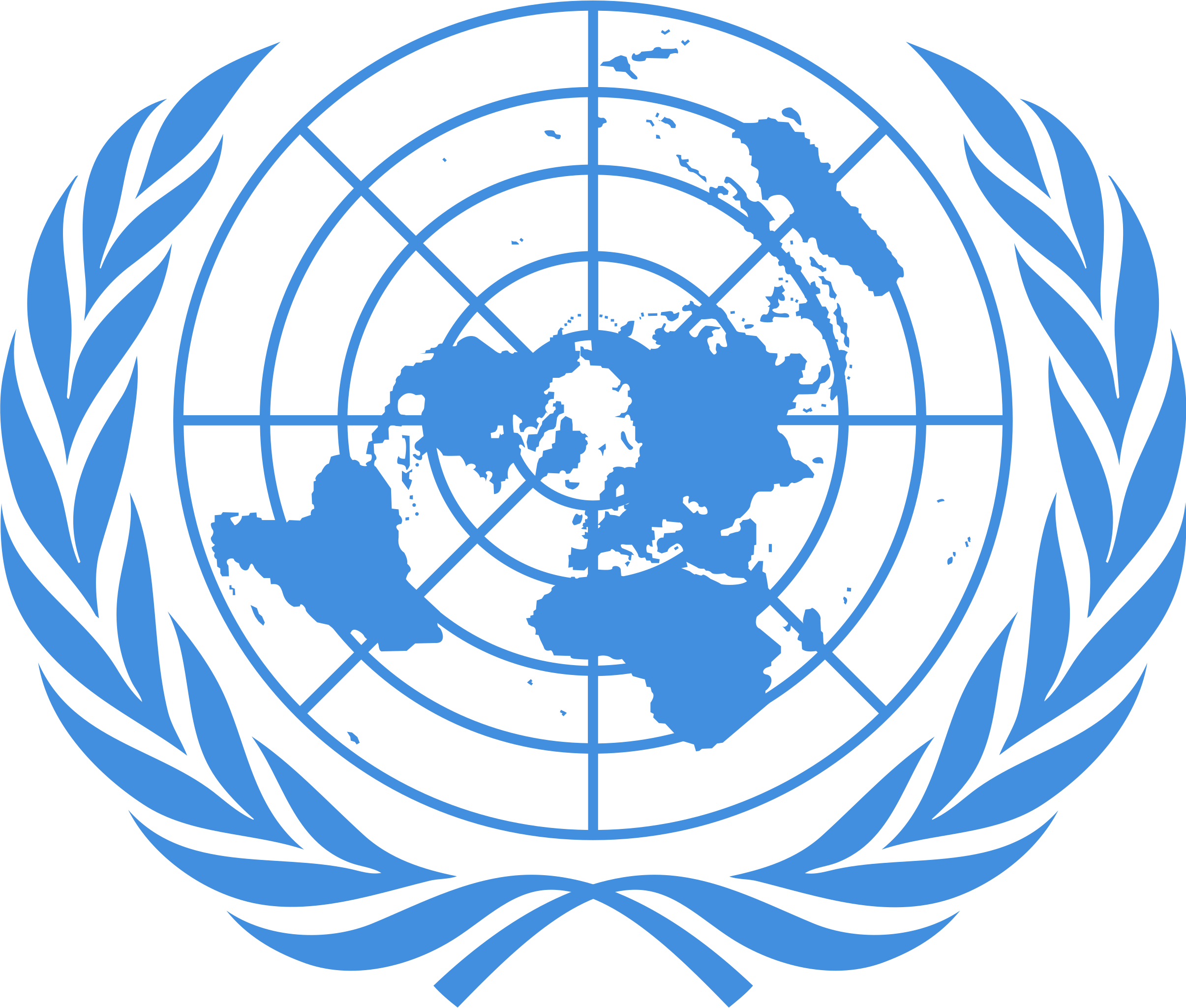 United Nations
United Nations
 Architecture
Architecture
 Music
Music

 Animal world
Animal world
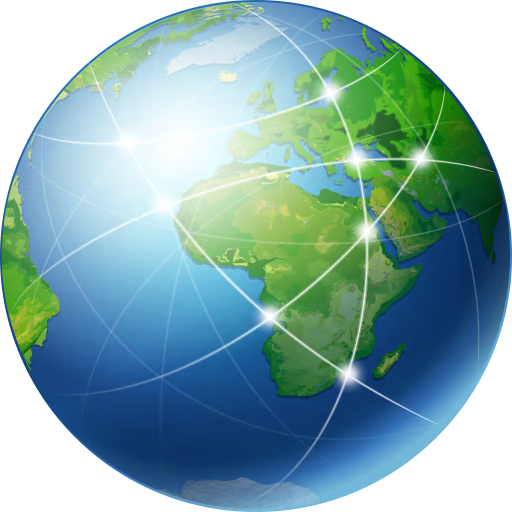 Geography
Geography
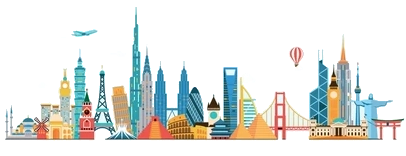 International cities
International cities
 Transport and traffic
Transport and traffic
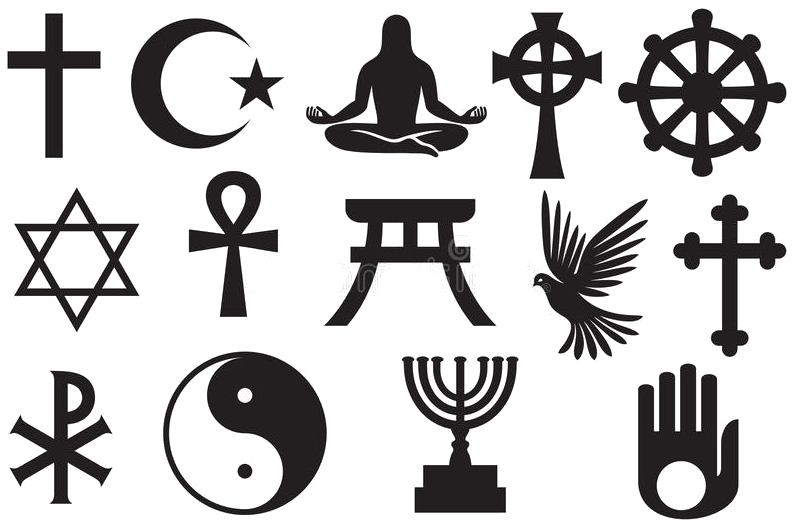 Religion
Religion
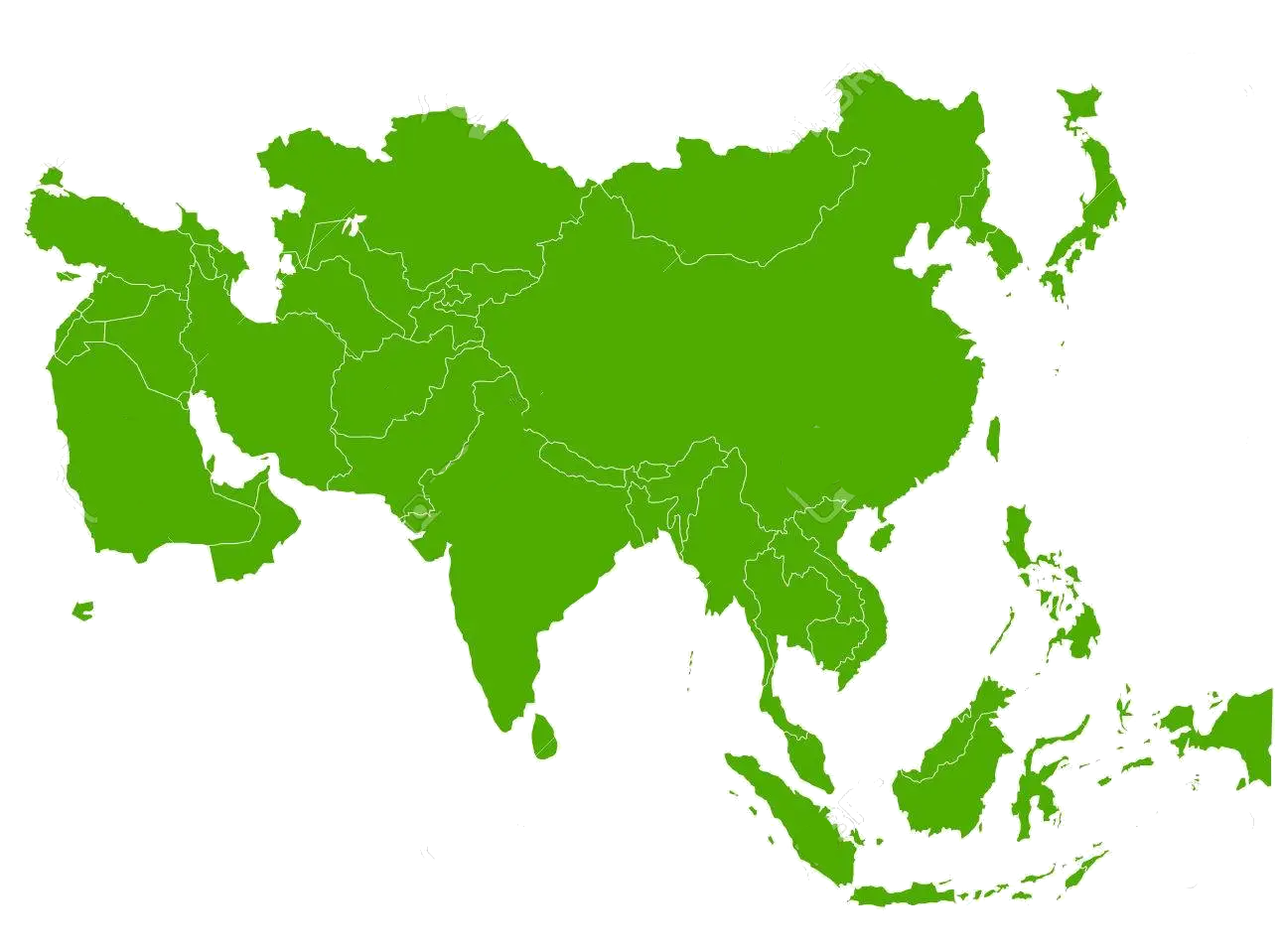 States of Asia
States of Asia

